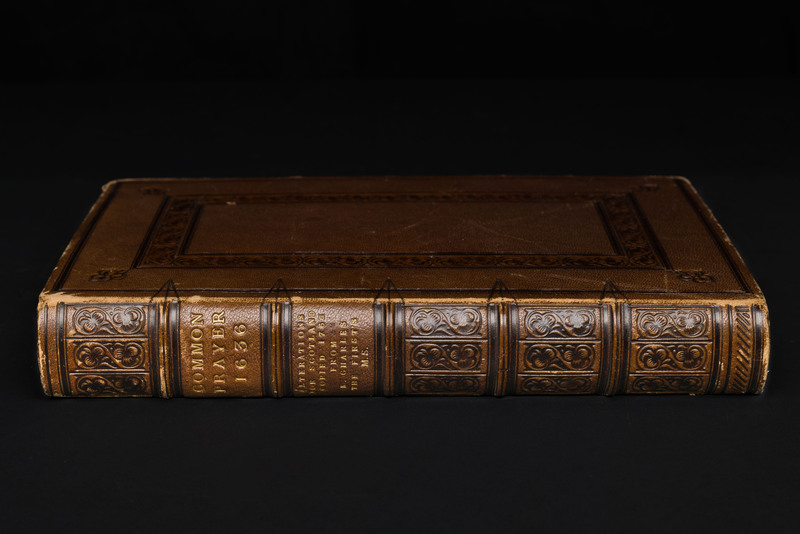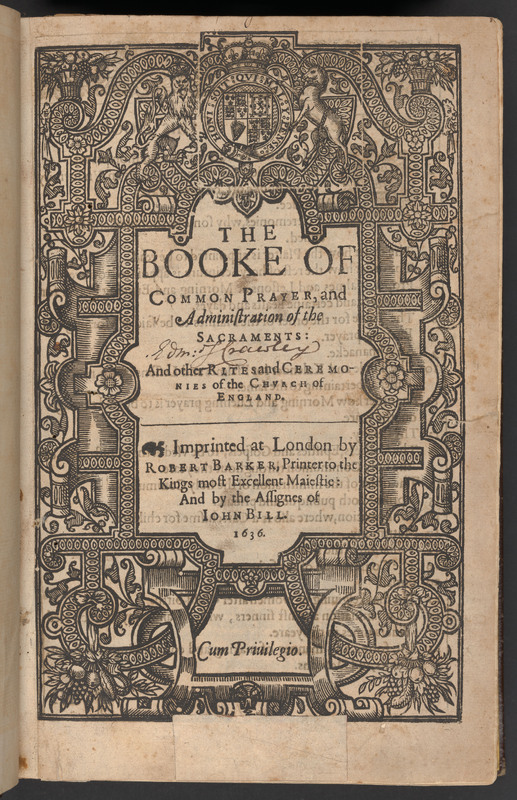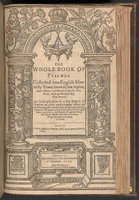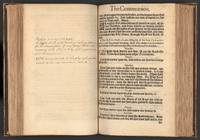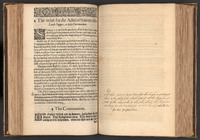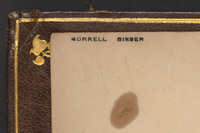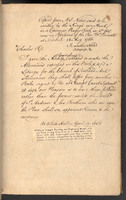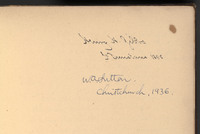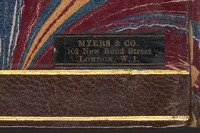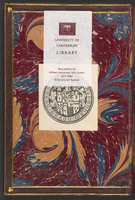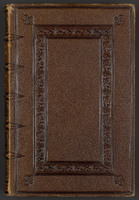Church of England ‘The booke of common prayer' 1636. (Report)
The booke of common prayer, and administration of the sacraments: and other rites and ceremonies of the Church of England. Imprinted at London : By Robert Barker ... and by the assignes of Iohn Bill., 1636.
Report written by UC student, Harriet Thompson 2024. (Initially enrolled in an Independent Course of Study)
This is a ‘Book of Common prayer’ to be used within English churches. It was used to direct worship in the Church of England, and included details on which prayers to use, which days to remember, and contained information on how to pray. It is a 1636 book produced at the behest of King Charles I, and a copy of the 1559 ‘Book of Common Prayer’.
It is Quarto in size, although it is a very large quarto. This means that four leaves (eight pages) were printed on the same sheet, folded twice, and then sewn together with other Quarto booklets to form the intended book. Quartos are usually smaller. This is perhaps significant as quarto books are often cheaper and faster to produce. This would be needed in this context as Charles I intended for a mass reproduction of these prayer books. However, the large size allows for the book to still appear impressive and be far easier to read from, which would be desired within churches by their vicars. There are annotations throughout the book, indicating changes to church policy over time, and a personalization for a particular parish by the vicar.
Why is it significant?
This book, while perhaps once a common book found in many English churches of the period, is a singularly important representation of a tumultuous period in British history. The 1636 ‘Book of Common prayer’ was said to be “written by the King’s own hand”. King Charles I ruled during a particularly turbulent period of British history. He was the second son of James I, who unified the Scottish and English crowns. James I faced troubles unifying the two countries however, a problem that his successor, Charles I, inherited. Charles eventually lost his throne to parliamentarian forces and was executed in 1649. During his life time he sought to unite the Church of England to that of Scotland, and therefore produced a new “Scottish Book of Common prayer” for this purpose. This is noted in this 1636 copy, as it includes “alterations for Scotland copied 1766 from K. Charles the first’s M.S.” and later that he wanted a “uniformities of the Booke of Common prayer to be used throughout the Realme”. This means that the previous owner of the book attempted to make changes to ensure that it fit the new liturgical rules intended for Scottish and British audiences.
This book sought to justify the changes successive English monarchs had made to the Church, stating within its pages that certain ceremonies “are put away, because the great excelle and multitude of them hath to increased in these latter days, that the burden of them was intolerable”. It later goes on to say that it is such ceremonies “were come at the first of godly intent and purpose devised, yet at length turned into vanity and superstition”. The King therefore sought to justify the changes he was making, which ultimately would be to encourage unity between Scotland and England. Such intent is even shown in the imagery of the book, as it features intricate detailing on letters and titles at the beginning of the book, as well as several royal crests. The 1637 Scottish version of this book was met with extreme criticism. In Scotland, there were fears that the book would result in the reinstatement of Catholicism, which resulted in mass protests. What had previously been an uneasy quasi-separation between the two groups resulted in a decisive division between the Crown and Scottish ‘Covenanters’. This led to the ‘Bishops’ Wars’ of 1639 – 1640, a series of two short campaigns. The Treaty of London of 1641 officially ended the violence. It was an embarrassment for Charles I as it required the Crown to pay arrears of pay to the Scottish army and give royal agreement to the changes initially desired by the Scottish Covenanters and Glasglow assembly. What followed was a deeper division, both between the Crown and Scotland, and within Scotland itself.
This ‘Book of Common prayer’ is therefore an important relic of an instigator of a deep and significant historical division.
Where has it come from?
This book was originally printed by Robert Barker, who is labelled within the book as a “printer to the Kings most excellent majestie: And by the assignes of John Bill 1636”, followed by “Cum privilegio”, which means with privilege in Latin. “Cum privilegio” is usually used within books to indicate that a particular issue has been authorized by a relevant party (in this case the King of England). There is evidence of this book being rebound, as there is an inscription of “Morell Binder” on the first page. They were known for their intricate marble style across the inside of the book cover and for their creative designs. Morell Binders was founded in 1861, so it is clearly not the original binding, since it was originally printed in 1636. This indicates a high level of care and attempt at preservation by previous owners.
This book was has been donated by Bill Sutton to the University of Canterbury. Bill Sutton was born in 1917 at Sydenham in Christchurch. He graduated from the Canterbury College School of Art in 1937 and later studied at the Anglo-French Art Centre in London after his war service. He taught at the School of Fine Arts at Canterbury University for 40 years, and during his retirement continued to work as an artist full time. He donated numerous artworks to the Robert McDougall Art Gallery, and entrusted his books to the University of Canterbury’s library after his death in 2000.
Sources used:
https://www.rct.uk/collection/people/george-ii-king-of-great-britain-1683-1760
https://mflibra.com/blogs/quotes/great-binders-morrell-bindery?srsltid=AfmBOoqcOIYRnihzpzGxErTeKzeL02s04_lfHIk4gX4k5-Ydf7gFwm0M
https://www.abaa.org/glossary/entry/quarto
https://www.merriam-webster.com/dictionary/cum%20privilegio
https://www.canterbury.ac.nz/about-uc/our-story/150th/twelve-local-heroes-trail/william-sutton
https://my.christchurchcitylibraries.com/william-sutton/
The National Covenant, 1637-60 (scottishhistorysociety.com) Bishops’ Wars | Scottish, Covenanters, Charles I | Britannica
Citing information:
Harriet Thompson. Church of England ‘The booke of common prayer' 1636. Canterbury Renaissance and Reformation, https://digitalvoyages.canterbury.ac.nz/omeka-s/s/ren_ref/page/common_prayer_1636 (Access date)

